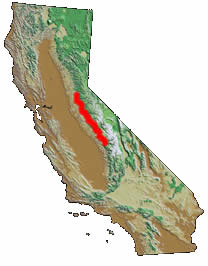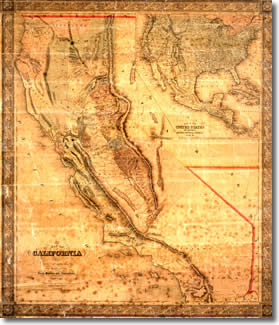The Mother Lode
by Snowy Range Reflections staff
La Veta Madre. The Mother Lode.
 This term is used to describe the rich veins of gold coursing through the Gold Country. Originally the term covered a limited area — about 120 miles from Bear Valley to Auburn. However, “Mother Lode” quickly came to describe the entire gold bearing regions along the Highway 49 corridor.
This term is used to describe the rich veins of gold coursing through the Gold Country. Originally the term covered a limited area — about 120 miles from Bear Valley to Auburn. However, “Mother Lode” quickly came to describe the entire gold bearing regions along the Highway 49 corridor.
According to most sources, the term “Mother Lode” was first used near Nashville in El Dorado County in 1848. Nashville was one of the first quartz mining locales in the area.
California’s Mother Lode was extraordinarily productive. Statistics from the California Department of Conservation, Divisions of Mines and Geology, indicate that from 1848 to 1967, California was the source of more than 106 million troy ounces of gold — by far the most of any state in the union. Mineral extraction was through placer mining (or finding readily available nuggets in sand, gravel or on the surface); hydraulic mining (washing away hillsides to sever the golden glint); or hard rock mining (burrowing underground to follow the veins of gold usually locked in a quartz matrix). The placer deposits in the Mother Lode are rich and of particularly high quality. In the earliest days of the Gold Rush the yield of surface riches was high — estimates of $81 million in 1852 alone.
From Surface to Underground
However, the surface gold was quickly exhausted and the vastly more productive underground mining took precedence. Throughout the Gold Country, the veins were interlaced. A 1970 Division of Mines and Geology Bulletin provides the scientific particulars: “The veins usually range from one to 10 feet in thickness and consist of quartz with some calcite and ankerite. They fill minor thrust faults. Many veins contain several generations of quartz.There are numerous northeast-striking, vertical or steeply-dipping fractures or ‘crossings’ that commonly are boundaries of ore shoots. The ore contains free gold and varying amounts of sulfides, chiefly pyrite. Present in smaller amounts are galena, chalcopyrite, arsenopyrite, sphalerite, and pyrrhotite. Galena is commonly associated with gold.
The ore contains free gold and varying amounts of sulfides, chiefly pyrite. Present in smaller amounts are galena, chalcopyrite, arsenopyrite, sphalerite, and pyrrhotite. Galena is commonly associated with gold.
The ore shoots vary considerably in size and shape, and the distribution of gold within the shoots is erratic. Some have pitch lengths of up to several thousand feet, and the veins have been developed to inclined depths of as much as 11,000 feet. Much specimen ore has been found, but milling ore usually averaged from 0.25 to 0.5 ounce of gold per ton.”
La Veta Madre.
The Mother Lode.
